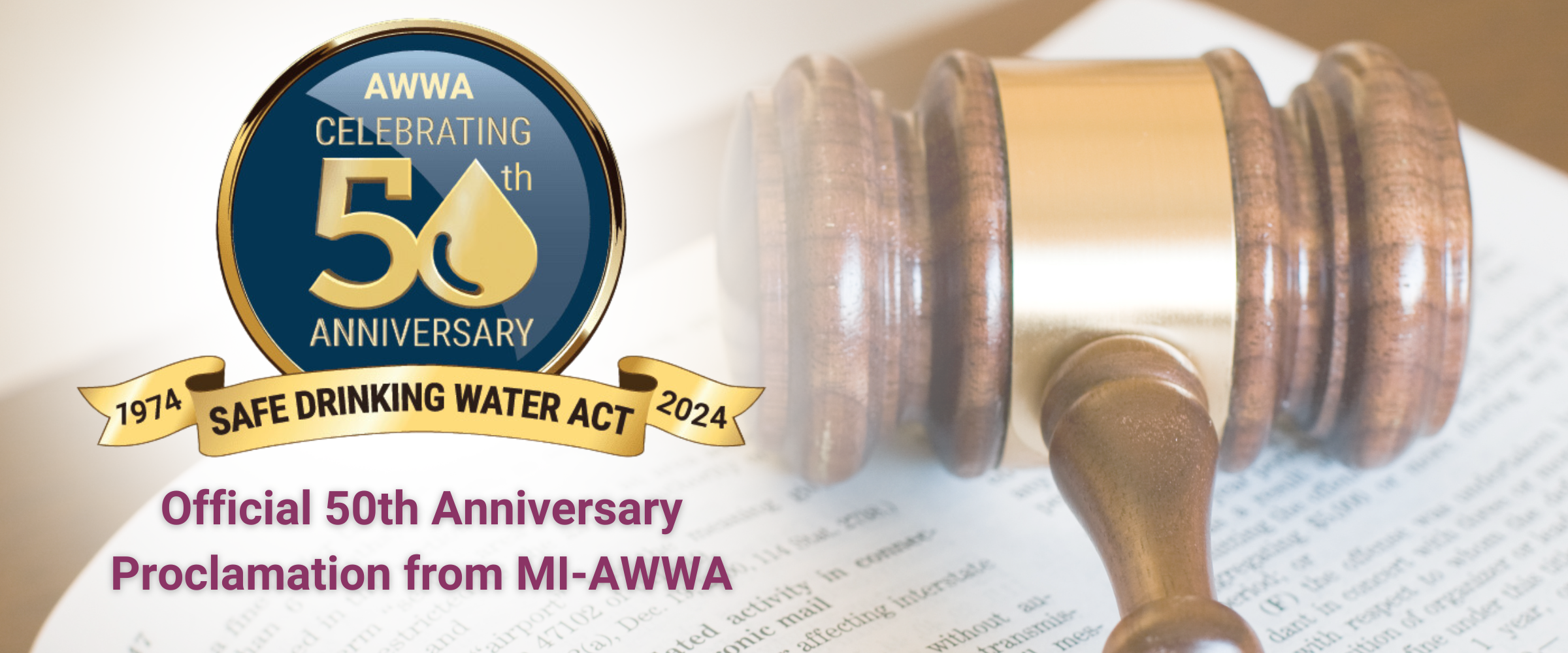Safe Drinking Water Act: 50th Anniversary
Celebrate with AWWA!
Commemorating 50 Years of the Safe Drinking Water Act!Signed into law on December 16, 1974, the Safe Drinking Water Act (SDWA) reaches its 50th anniversary in 2024. To honor this milestone, AWWA proudly celebrates the achievements of the sector and the dedication of water professionals whose tireless work has ensured safe and dependable water. Join us in acknowledging this historic anniversary by exploring the news and resources available here. |
The US Safe Drinking Water Act at 50: A Pillar of Public Health Protection and Source Water Security
The United States Safe Drinking Water Act (SDWA) of 1974, celebrating its 50th anniversary this year, has been a cornerstone in ensuring access to clean and safe drinking water for Americans. This landmark legislation has played a pivotal role in safeguarding public health and addressing historical water contamination issues, while also emphasizing the critical importance of source water protection. The Michigan Section of the American Water Works Association (AWWA) has been instrumental in implementing and supporting the SDWA at the state level, since the law’s passage. Before the SDWA, the nation grappled with alarming water contamination issues, prompting a groundswell of public awareness and calls for regulatory action. The Act emerged as a response to the urgent need for a comprehensive framework to protect the quality of drinking water, as Peter Gleick discusses in his book “Water Crisis: A Guide to the World’s Fresh Water Resource.” |
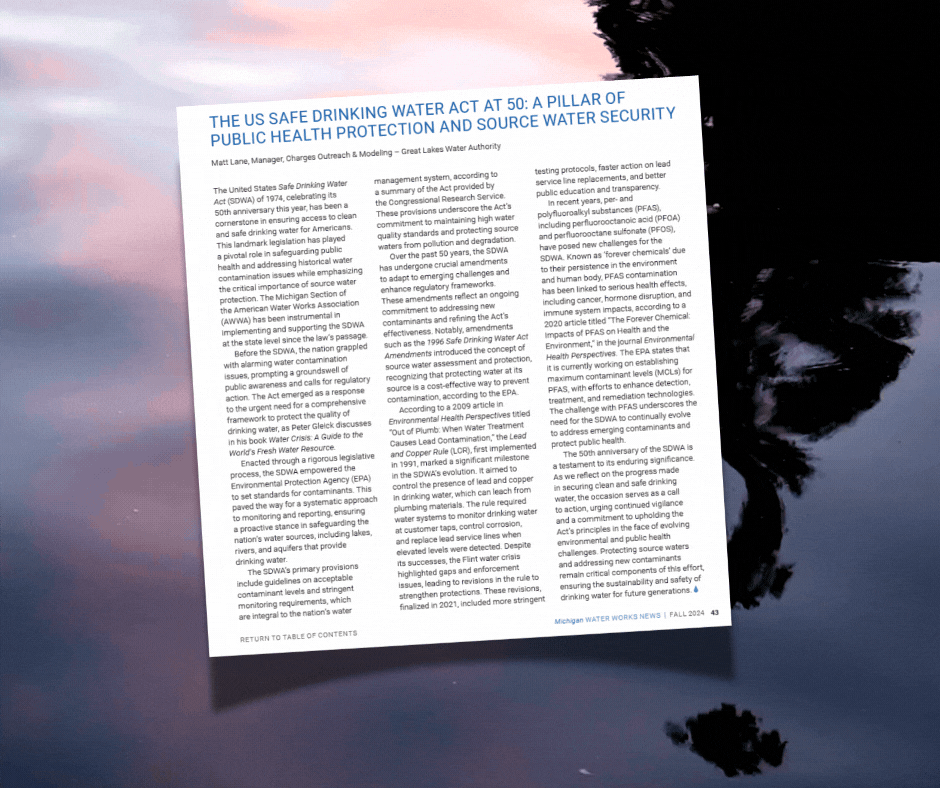 See the article in the current edition of Water Works News! |
Enacted through a rigorous legislative process, the SDWA empowered the Environmental Protection Agency (EPA) to set standards for contaminants. This paved the way for a systematic approach to monitoring and reporting, ensuring a proactive stance in safeguarding the nation's water sources, including lakes, rivers, and aquifers that provide drinking water.
The SDWA's primary provisions include guidelines on acceptable contaminant levels and stringent monitoring requirements, which are integral to the nation's water management system, according to a summary of the Act provided by the Congressional Research Service. These provisions underscore the Act's commitment to maintaining high water quality standards and protecting source waters from pollution and degradation.
Over the past 50 years, the SDWA has undergone crucial amendments to adapt to emerging challenges and enhance regulatory frameworks. These amendments reflect an ongoing commitment to addressing new contaminants and refining the Act's effectiveness. Notably, amendments such as the 1996 Safe Drinking Water Act Amendments introduced the concept of source water assessment and protection, recognizing that protecting water at its source is a cost-effective way to prevent contamination, according to the EPA.
According to a 2009 article in Environmental Health Perspectives titled “Out of Plumb: When Water Treatment Causes Lead Contamination,” the Lead and Copper Rule (LCR), first implemented in 1991, marked a significant milestone in the SDWA’s evolution. It aimed to control the presence of lead and copper in drinking water, which can leach from plumbing materials. The rule required water systems to monitor drinking water at customer taps, control corrosion, and replace lead service lines when elevated levels were detected. Despite its successes, the Flint water crisis highlighted gaps and enforcement issues, leading to revisions in the rule to strengthen protections. These revisions, finalized in 2021, included more stringent testing protocols, faster action on lead service line replacements, and better public education and transparency.
In recent years, per- and polyfluoroalkyl substances (PFAS), including perfluorooctanoic acid (PFOA) and perfluorooctane sulfonate (PFOS), pose new challenges for the SDWA. Known as "forever chemicals" due to their persistence in the environment and human body, PFAS contamination has been linked to serious health effects, including cancer, hormone disruption, and immune system impacts, according to a 2020 article titled “The Forever Chemical: Impacts of PFAS on Health and the Environment,” in the journal Environmental Health Perspectives. The EPA states that it is currently working on establishing maximum contaminant levels (MCLs) for PFAS, with efforts to enhance detection, treatment, and remediation technologies. The challenge with PFAS underscores the need for the SDWA to continually evolve to address emerging contaminants and protect public health.
The 50th anniversary of the SDWA is a testament to its enduring significance. As we reflect on the progress made in securing clean and safe drinking water, the occasion serves as a call to action, urging continued vigilance and a commitment to upholding the Act's principles in the face of evolving environmental and public health challenges. Protecting source waters and addressing new contaminants remain critical components of this effort, ensuring the sustainability and safety of drinking water for future generations.💧
DOWNLOAD THE OFFICIAL SDWA LOCAL GOVERNMENT PROCLAMATION HERE
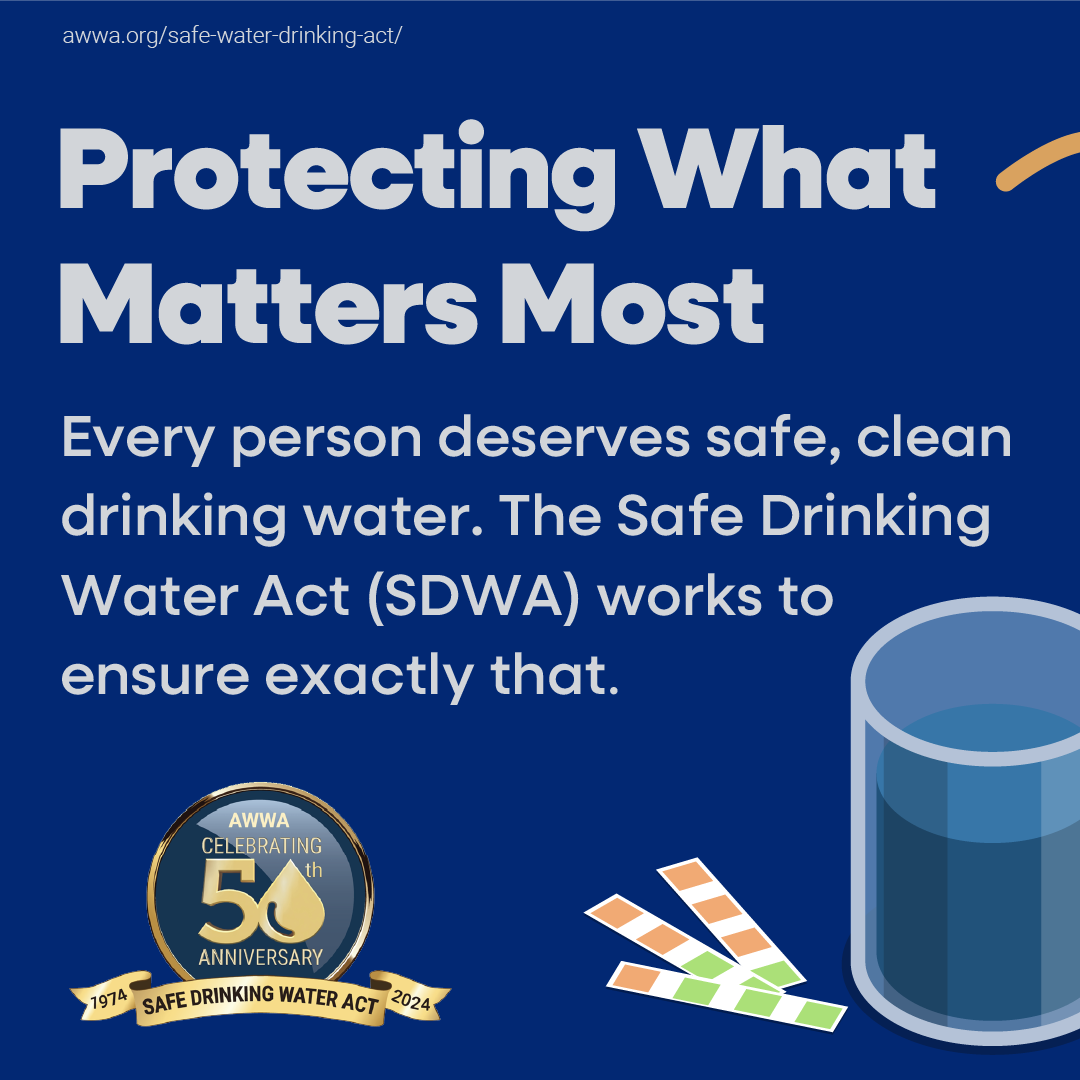 |
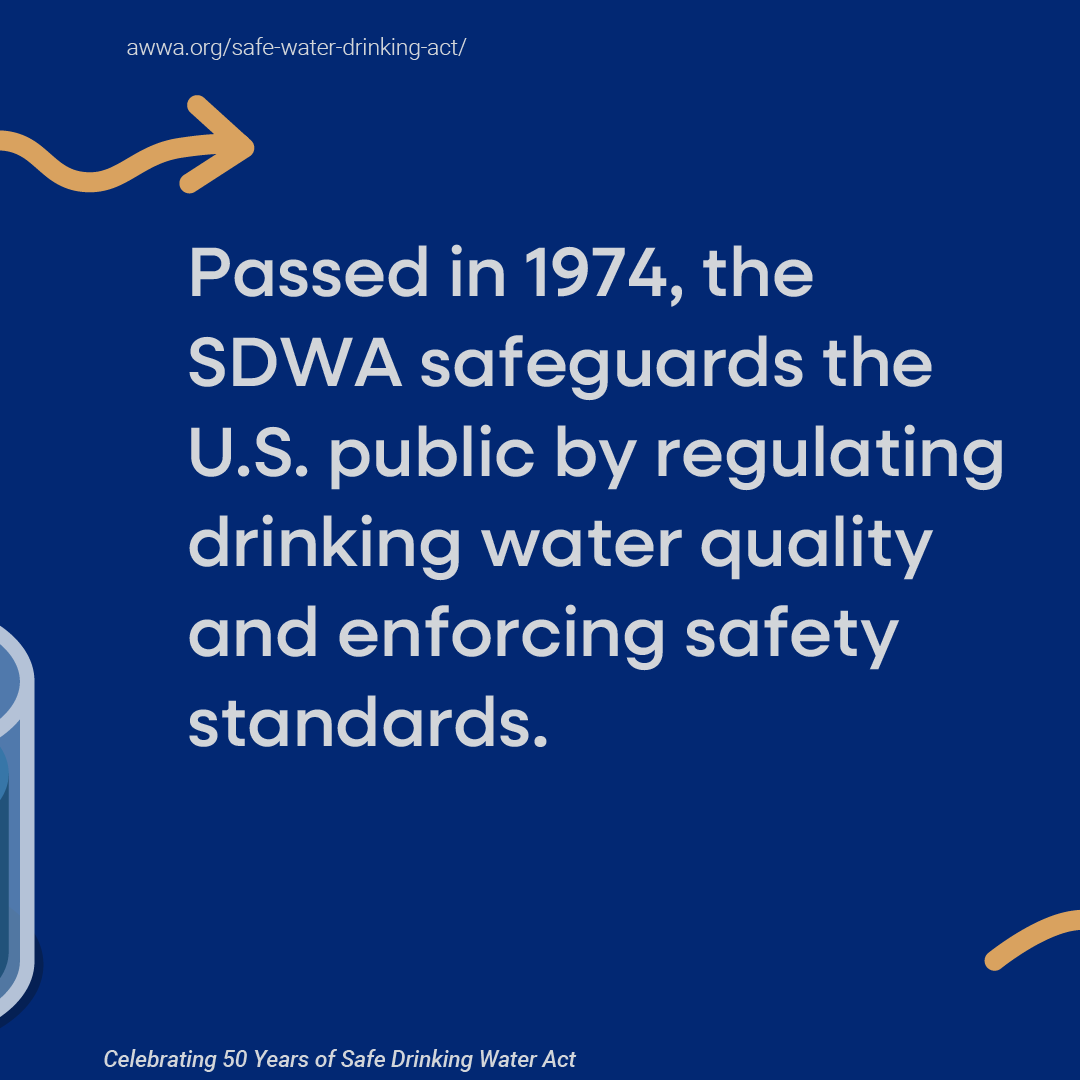 |
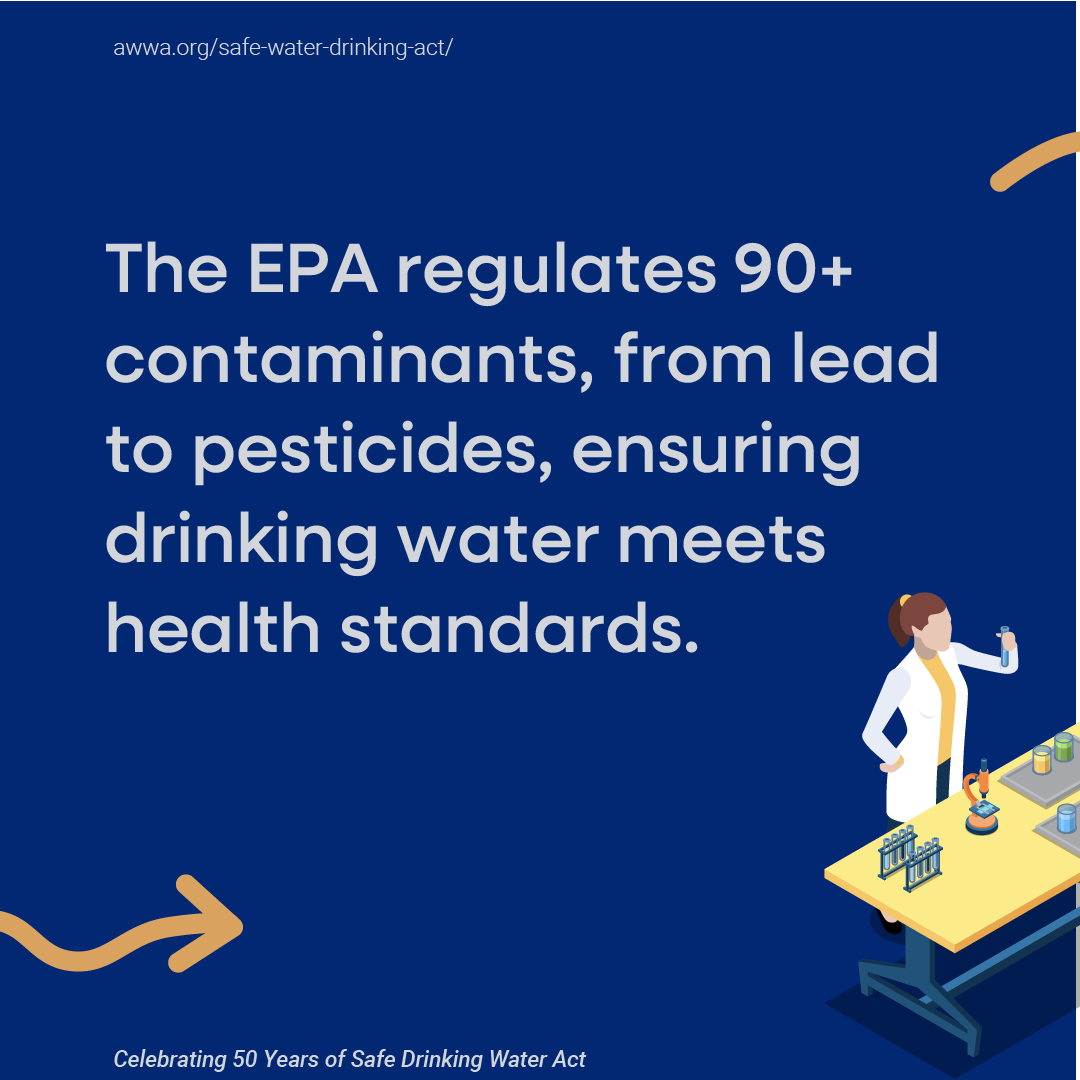 |
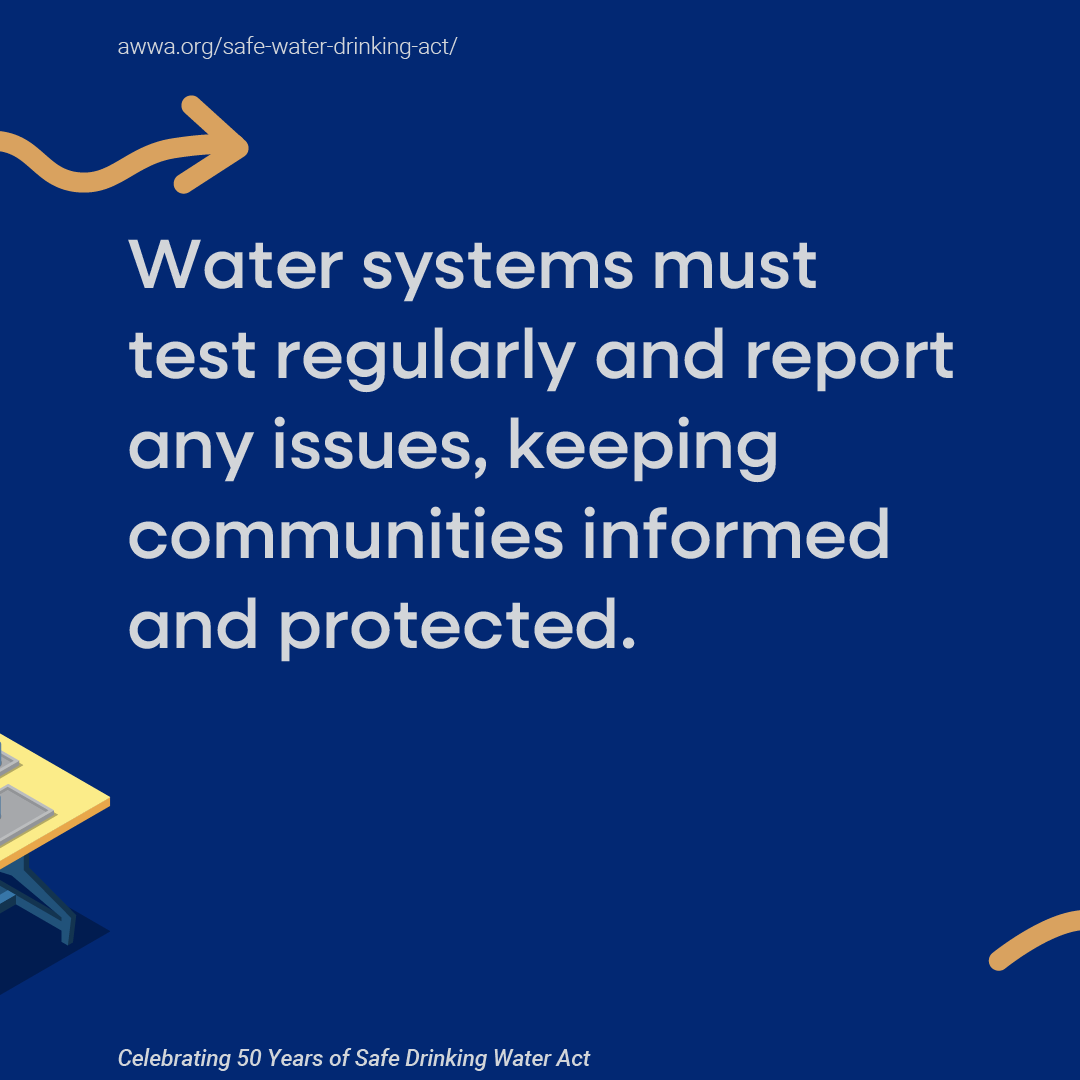 |
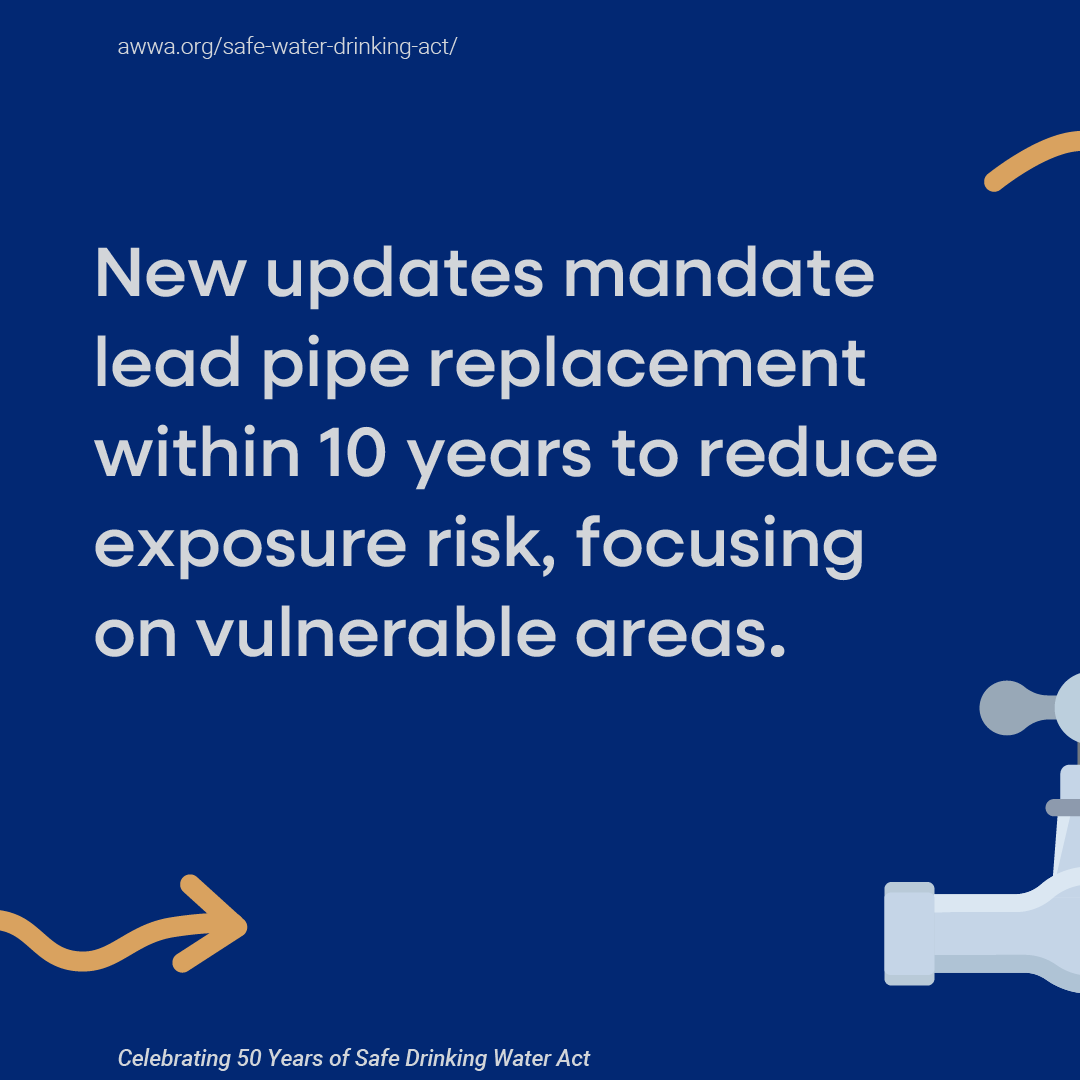 |
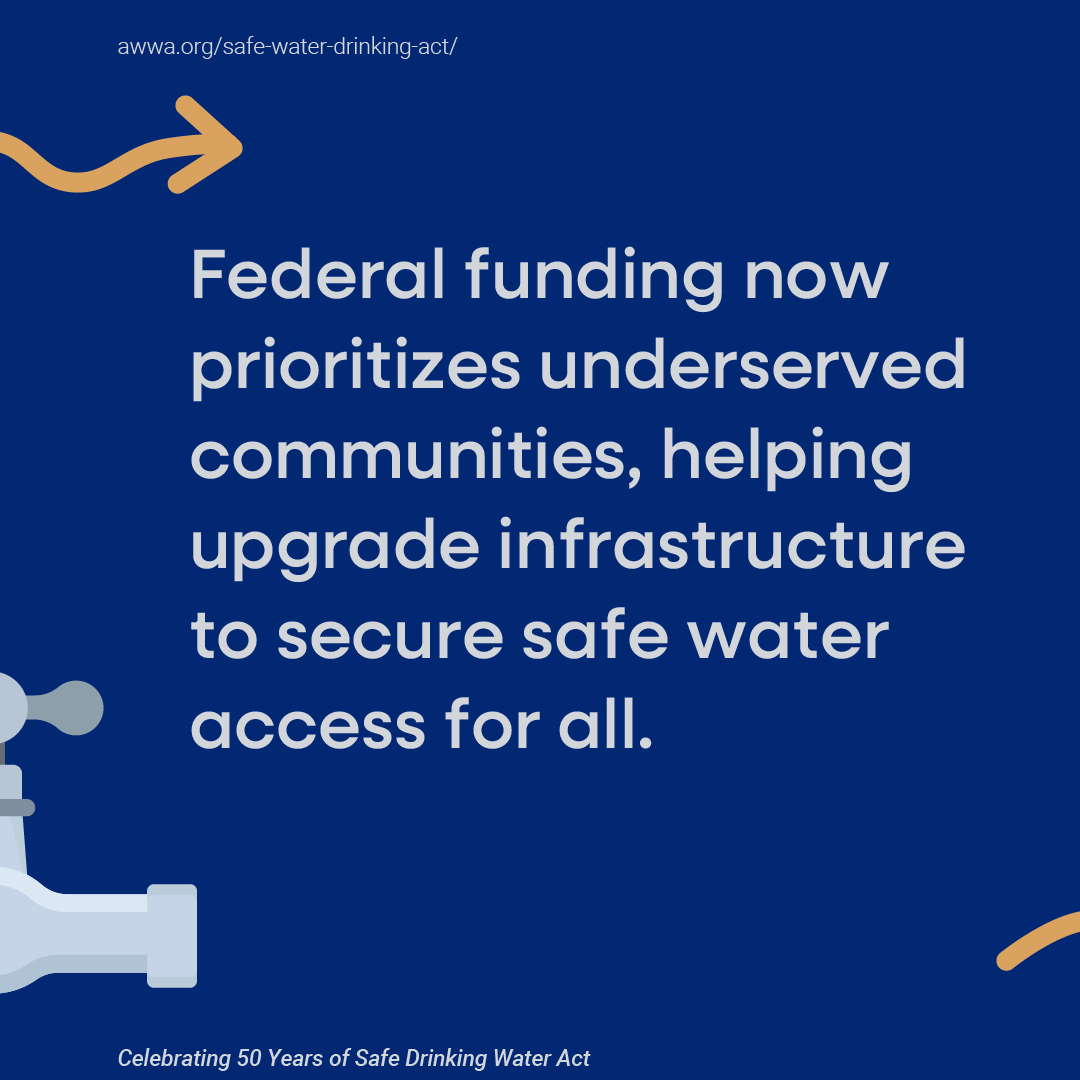 |
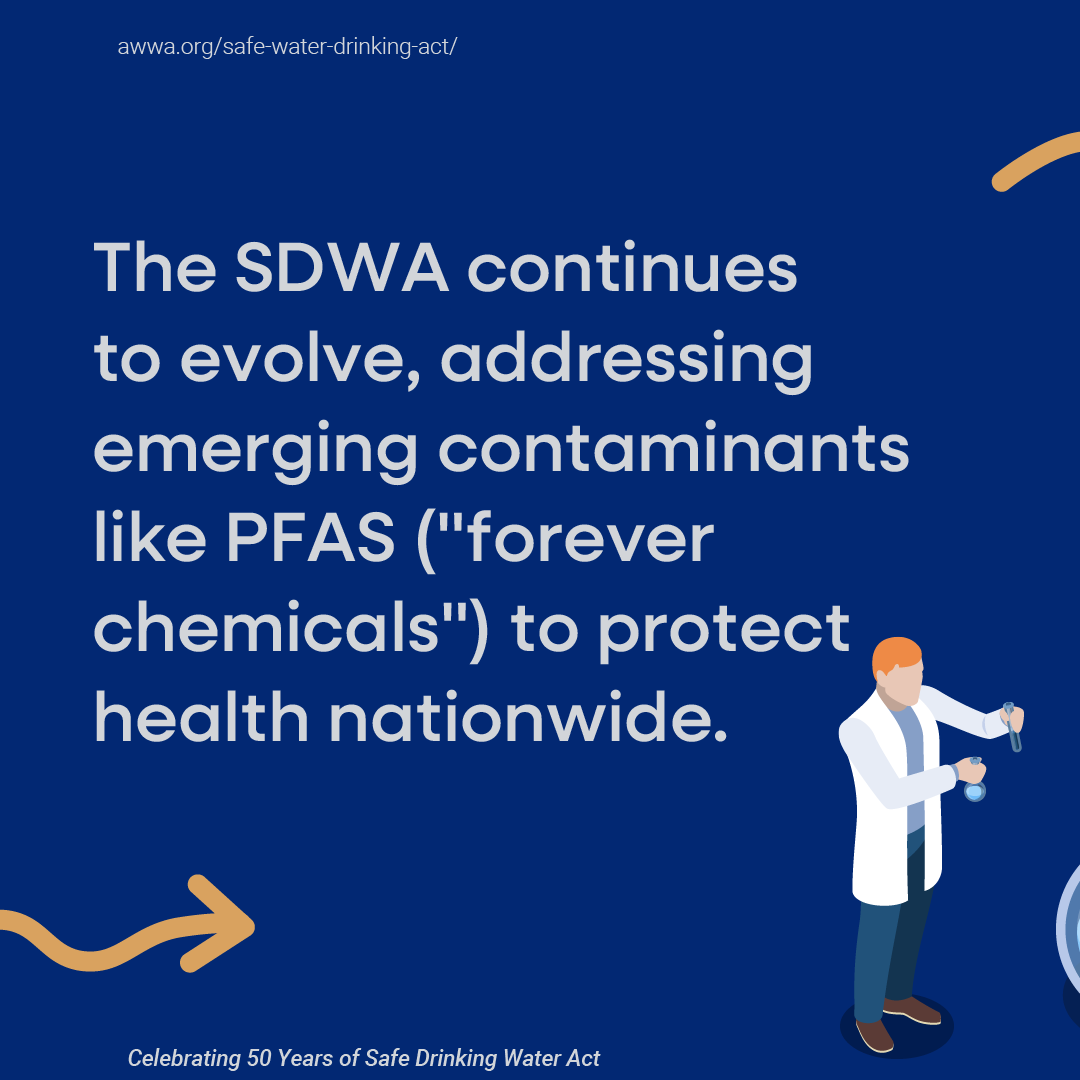 |
 |
Learn more at https://www.awwa.org/safe-water-drinking-act/#history

